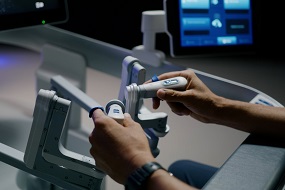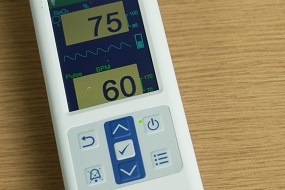
Medtronic stories
Sound Up! Designing the sounds of healthcare technology
A five-part series on how device sounds are engineered with patients and healthcare providers in mind
Nursing student Marie Harries was working with a patient when she heard a beep. It was a sound she instantly recognized – and knew she shouldn’t ignore.

Diagnosed with Type 1 diabetes at 6 years old, she’s learned that her health may depend on responding to audible alerts coming from her insulin pump system.
“I looked at my pump and found out it was telling me that my sensor battery was low — meaning I didn't fully charge it, which was a mistake on my part,” Marie recalled. “I really appreciated that because you need to be attuned to that or your insulin pump won’t work, and clearly I was so focused on the patient that I missed it.”
The audible alert from Marie’s MiniMed™ 780G system illustrates why sound design is a critical element of healthcare technology. We talked to Medtronic sound design experts to learn more.
What is sound design?
For the past few decades, most people have become accustomed to a wide variety of intentionally chosen audible cues.
In entertainment, you might think of sound effects like the instantly recognizable noise of a light saber activating in Star Wars, the roar of a cartoon dragon, or the sound accompanying the Netflix logo. In your day-to-day life, you’re all-too-familiar with beeps and other noises that come with pressing buttons on modern devices, from household appliances to alarms and ringtones.
They’re all designed to relay a message, and usually, the message is simple. There are sounds for success. Sounds that indicate that didn’t work. Sounds of warning.
When these sounds are designed correctly, you hear them and instantly understand what they are trying to tell you.
And these sounds aren’t chosen lightly. Learn how designers create ‘physical sounds’, what inspires medical device design, how sounds impact the patient experience, and about efforts to combat alarm fatigue through sound design.
Important Safety Information for Insulin Infusion Pumps
Successful operation of insulin infusion pumps requires adequate vision and hearing to recognize alerts and alarms. Rx required. Please visit https://bit.ly/importantsafety for additional details.
L00108162023
Other stories in our Sound Up! Series:
Stories published to our news archive may contain outdated information or links that are no longer active. Please note we do not update stories once they have been moved to the archive. Access and use the information in the stories at your own discretion.



